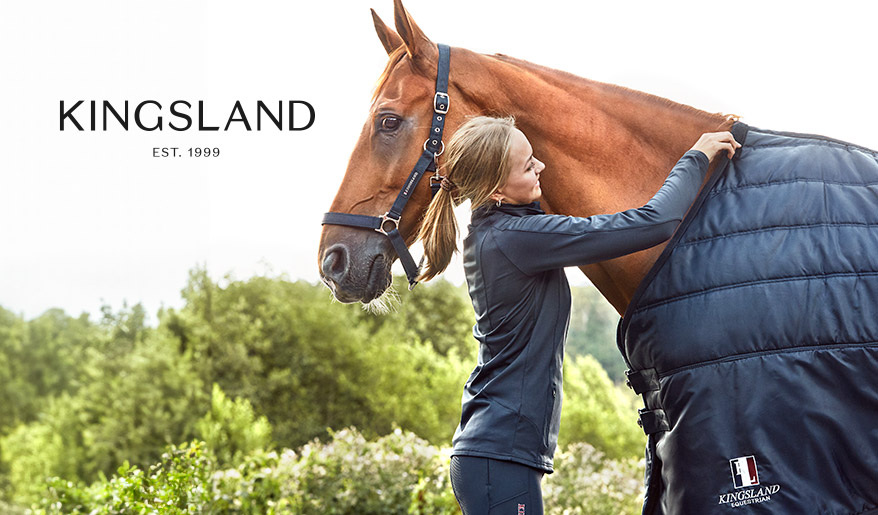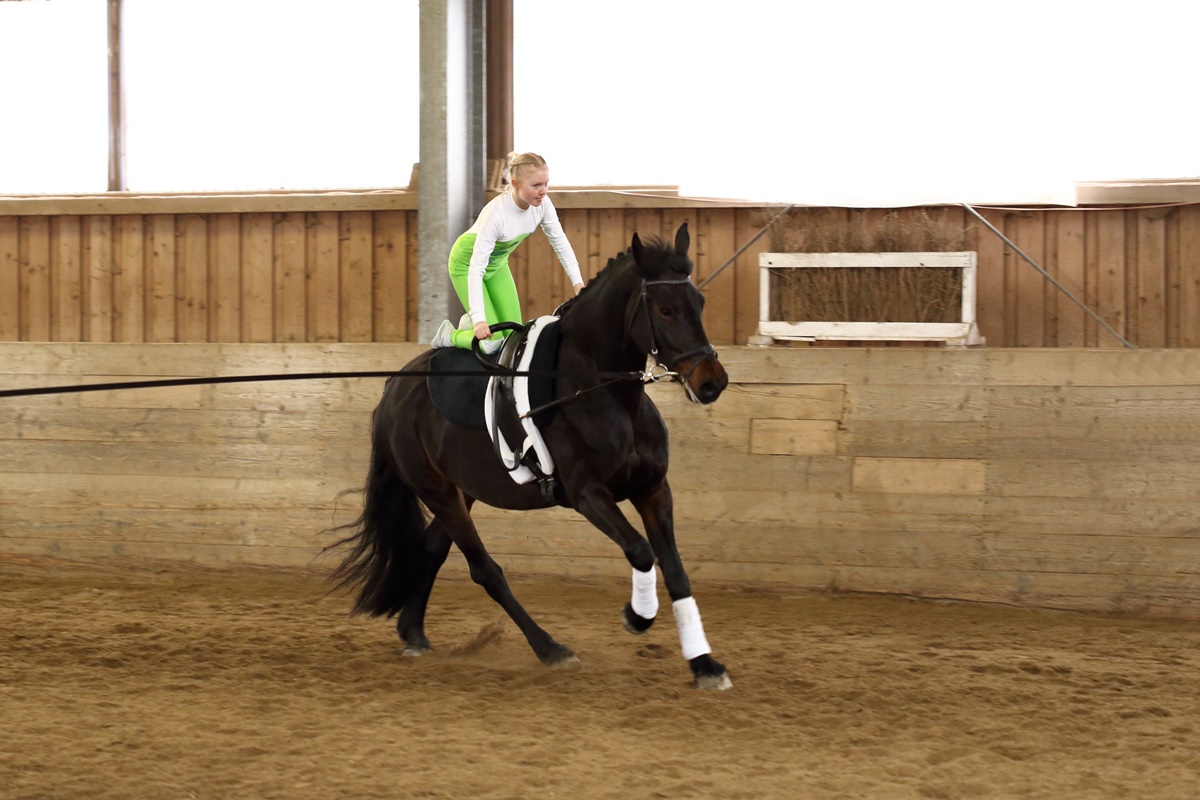
Equestrian sports are not only exciting and adrenaline-inducing but also beautiful and full of grace. Vaulting is a type of gymnastics regarded as one of the most artistic and phenomenal sports disciplines. It requires the rider to have full control over their body as well as great communication and cooperation with their horse that is sensitive to all signals.
What is vaulting and what does it entail?
Vaulting is one of the 7 equestrian disciplines backed up by the FEI. It’s often described as an artistic gymnastic on a horse because the rider does various gymnastic and acrobatic movements while staying on a horse. Modern vaulting is a separate discipline, but it can also be good training for riders from other equestrian disciplines. It’s recommended for beginners, but experienced riders can also benefit from it - it will add some variety to the training regime. This discipline requires the rider to perform various acrobatic and gymnastic poses while balancing on a cantering or walking horse that is lunged by another person. The speed of the horse depends on the difficulty of specific elements. To participate in vaulting, riders need to have great physical fitness, body awareness, harmony with the movement of the horse, and the ability to work in a team. It’s often part of the training plan of professional jumpers, dressage riders, and eventers. It allows the riders to work on their seat and increase their balance.
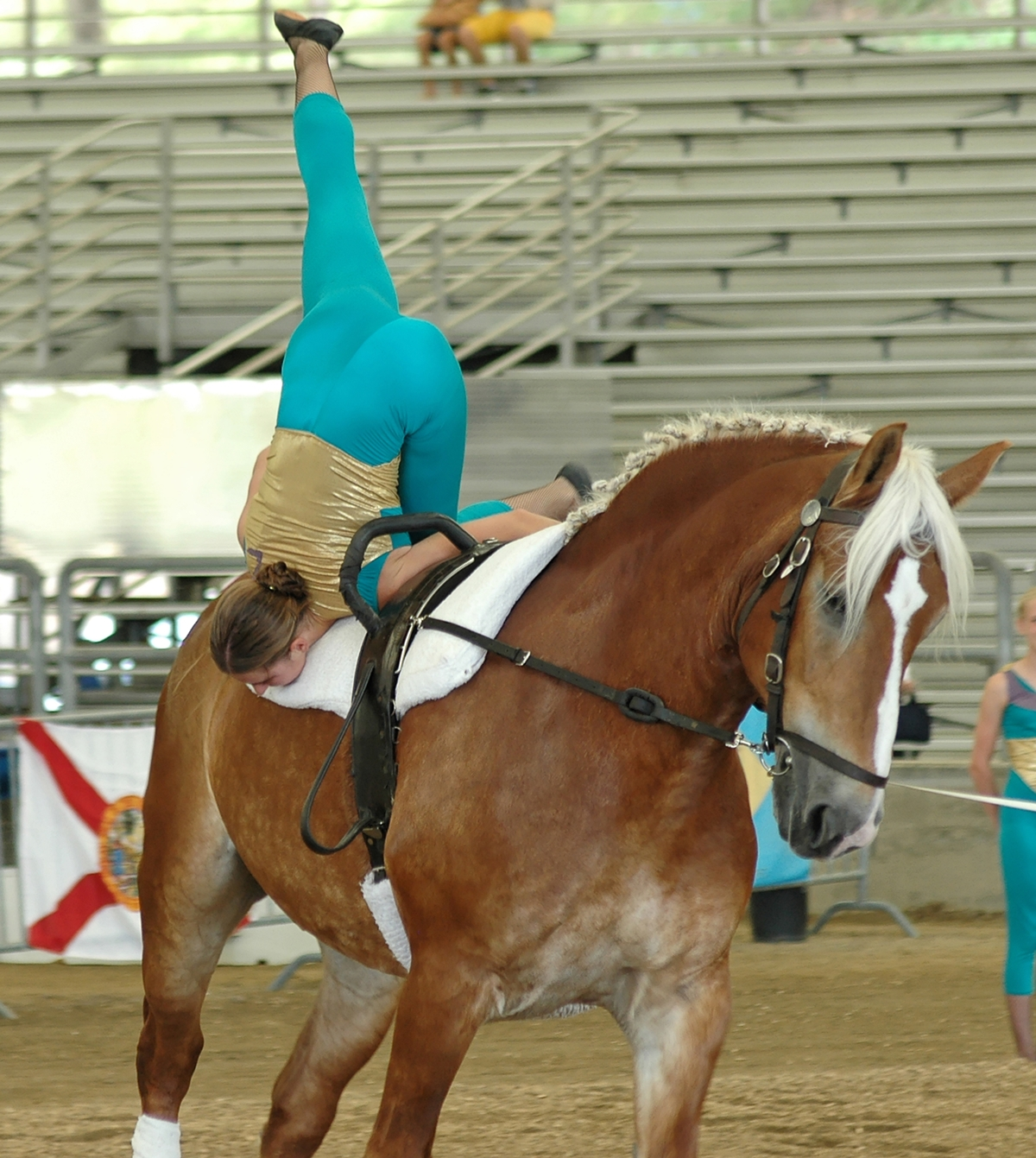
History of vaulting
The research on the genesis of vaulting showed that even over 2000 years ago people performed some acrobatic and dance-like movements on a cantering horse. According to some researchers, vaulting was present during Ancient Rome times. During the Olympics, one of the disciplines was acrobatics on a cantering horse. Another theory claims that vaulting had its beginnings on Crete, where people did special movements on bulls.
The name vaulting comes from the French word "la Voltige" ("voltiger") which meant acrobatics and flying up. The name was coined during the Renaissance when vaulting became one of the elements of the equestrian drill but also part of an agility exercise practiced by nobility and chivalry. In the 1920s vaulting transformed from being only a military exercise to being more popular among children and youth, which meant it allowed people to have contact with horses from an early age.
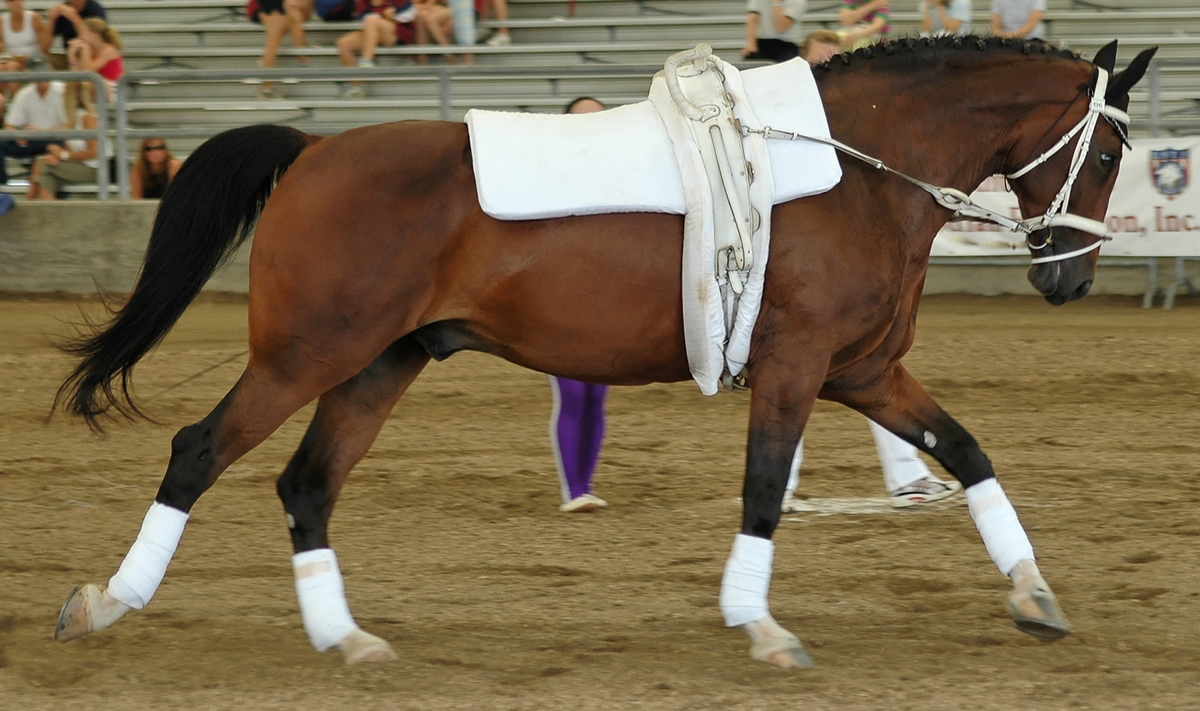
In the 1920c during the Olympic Games in Antwerp, vaulting for the first and last time was included as one of the Olympic disciplines. In the following years, vaulting was only part of the Olympics as a show, for example during the Olympics in 1984 Los Angeles and 1996 Atlanta.
The form of modern vaulting was created in pre-war Germany as an exercise for children to prepare them for every equestrian sport because these kinds of exercises greatly influence all skills needed in horse riding. The first team vaulting competition took place in Germany in 1963, while individual competition took place during the first German Championships in 1986.
In 1983 vaulting was declared an official sport discipline by FEI. These days vaulting riders during their first practice use a wooden horse before moving up to a real one. Some riding centers even organize competitions that involve only faux horses.
History of vaulting in Poland
The history of vaulting in Poland begins in the 80s. Then an amazing rider and dressage trainer Andrzej Sałacki convinced Hanna Kaczyńska - coach of the sports acrobatics section that trained in Jaroszówka near the horse stable, to try her strength in vaulting. Thanks to the experience gained from gymnastics, the newly established vaulting team quickly gained sports success. After less than a year of training, the vaulting team participated in World Championships in Switzerland in 1986 and placed sixth.
In the following years, the vaulting team had even better accomplishments in competitions; the team won winning bronze medals at the World Championships and European Championships several times. The most important achievements include 4th place at the 1987 European Championships in Paris (FR), 3rd place at the 1988 World Championships in Ebreichsdorf (AT), 3rd place at the 1992 World Championships in Heilbronn (GER), 3rd place at the 1993 European Championships and Non-Olympic Sports Olympics in Hague (NL), and 5th place at the 1998 World Championships in Rome (IT).
The success of the team from Jaroszówka led to the creation of other vaulting teams all over the country. In Iwno it was led by Elżbieta Dolińska, in Ochaby - Marcjan Gepferd, in Łącko - Jerzy Cywiński and Joanna Borysiuk, and in Aromer - Jolanta Krupa. For the past few years, the vaulting team from Aromer in Józefin, trained by Jan Ratajczak, has been accomplishing a lot of achievements. In 2003, the team won a bronze medal during the World Championships in Saumur, France.

Essential vaulting equipment
Every piece of tack in vaulting plays a crucial role in keeping the rider, as well as the horse, safe and sound.
Vaulting girth and pad
Vaulting girth is an extremely important piece of tack that increases the rider’s stability and balance. It is also an essential piece of equipment for a person performing acrobatics on a horse; the handles allow the person to hold onto them and have greater freedom of movement. The soft pad is supposed to distribute the rider's weight evenly and protect the horse’s back from injuries.
Bridle
A bridle is one of the basic riding equipment. It’s designed to keep the bit in the right position and allow good communication between a horse and a lunging person.
Side reins
Side reins are an additional pair of reins that help a horse to keep stable and soft contact, as well as teach the animal to move with balance and relaxation. The side reins are attached to the bit and then to the special rings on the vaulting girth.
Lunge line
The lunge line is used to lead a horse and increase the safety of the animal and performers. Lunger is a team member that holds the line and controls the speed of a horse. The lunge line is also a frequently used tool when teaching beginner riders.
Lunging whip
The lunger also holds a whip that helps to speed up the horse and keep it moving in a round circle.
Horses are allowed to wear bandages and boots in vaulting. Both of these pieces of equipment are supposed to protect the horse’s tendons during exercise.
6 most important vaulting movements
Basic seat – the vaulter sits on a horse with arms raised horizontally and legs on each side of the horse. The vaulter stays in this position for four canter strides.
Stand – in this position, the vaulter stands on the horse’s back with arms raised horizontally.
Scissors – in this movement, the vaulter first stands on their arms and then puts the inner leg over the outer leg. During this crossing, the rider changes position and sits down backward, facing the tail. Then the vaulter does the scissors again to return to the front-facing position.
Mill – in this movement, the vaulter moves their right and then left leg over the horse’s neck during four canter strides.
Flag – the vaulter starts on all four, then raises the left arm and right leg parallel to the horse's back, creating a straight line.
Flank – this entails jumping off a horse. The vaulter swings their legs backward and stands on their arms. Then twists their body to point into the inner circle and swing their legs forward (putting all the body weight onto their hands once again) and pushes away from the vaulting girth handle. The vaulter achieves a perfect jump-off when they land on the outer part of the circle and face the inner part.
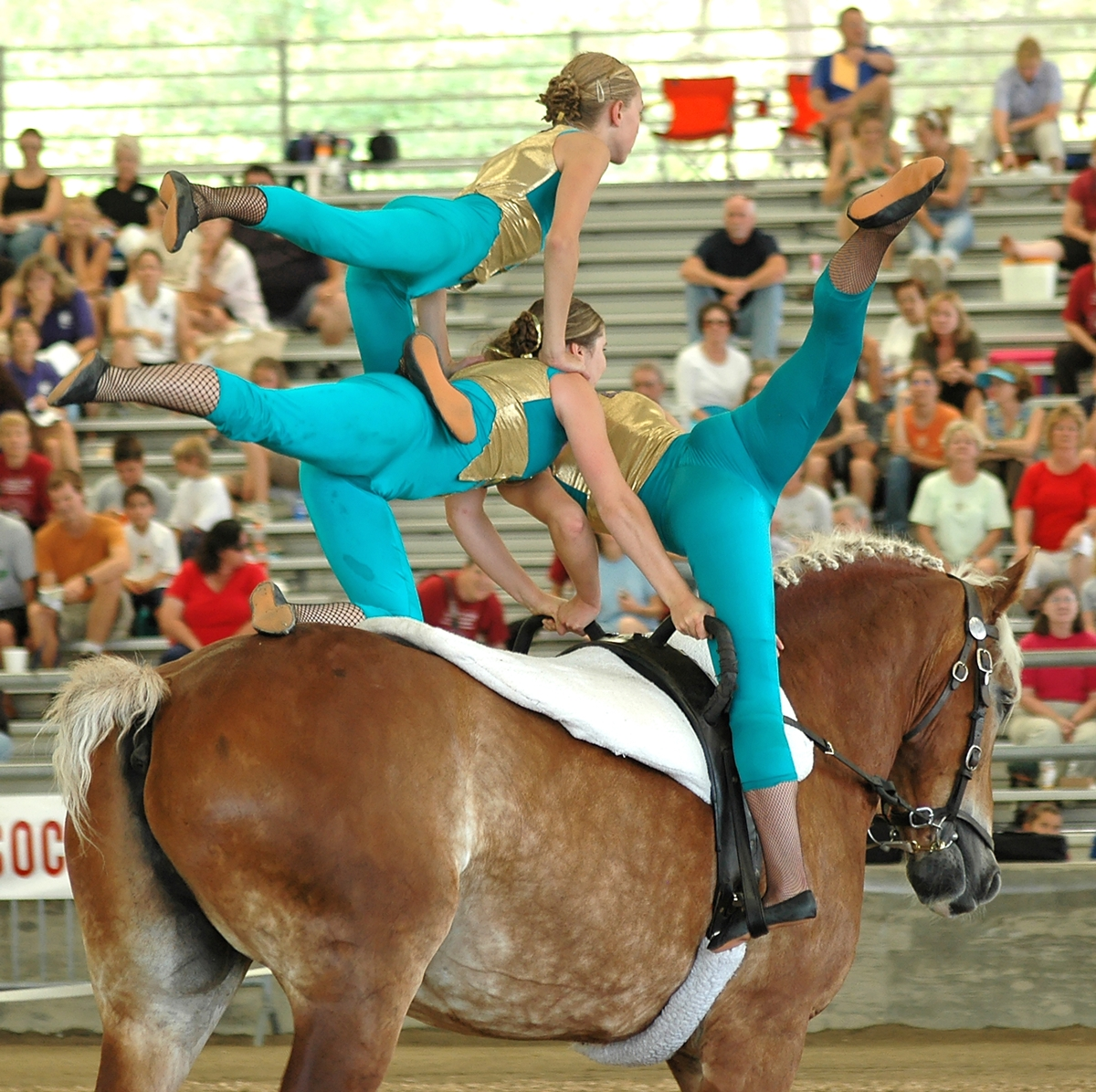
Vaulting competition rules
Vaulting competitions are organized in three different categories: individual, team, or pair (two vaulters and one lunger). A team consists of six vaulters and one lunger. Vaulting competitions involve performing a variety of acrobatic exercises in perfect balance. During the performance, horses are lunged on a 15 m circle.
Depending on the difficulty level, the movements can be performed on a cantering or walking horse, sometimes the movements are performed with background music. It’s often the case that individual vaulters perform on the same horse. The vaulting competition has two parts:
Compulsory exercises – this includes seven movements: vault on, basic seat, flag, mill, scissors, stand, and flank. All the movements need to be performed within 8 minutes. The movements are judged by a panel of 3 or 5 judges, whose evaluation is based on a scale of points from 1 to 10, similar to the way performances in sports acrobatics are judged.
Freestyle exercises – this part lasts 5 minutes during which the vaulters, simultaneously in pairs and teams of three, perform chosen movements with background music. The movements are chosen by the competitors, but they must abide by difficulty and composition rules. The vaulters can perform on either cantering or walking horses, depending on the difficulty of the performance. Judges' evaluation is based on the scale of difficulty of individual elements and their composition and performance of the entire performance.
Vaulting license
In order to have an official document that confirms your theoretical knowledge and practical skills in vaulting, there is a possibility to take an exam to get a vaulting license. The preparation for the exam can be done in any equestrian club or section. However, the exam can take place only in equestrian centers that are certified by PZJ (Polish Equestrian Federation). The exam can be taken up by any vaulter – they don’t have to sign up as a PZJ competitor. Currently, the exam has two parts – theoretical and practical. There are three different licenses:
Beginner vaulting license:
The vaulter needs to perform the mandatory exercises of category C of the individual competition according to the Polish National Regulations, each movement should be performed one after another. During the performance, the correct technique of the exercises performed by the individual vaulters is evaluated (the team, horse, and lunger are not taken into account). A minimum of 5.0 points must be obtained for the theoretical part and 5.0 points for the practical part.
Intermediate vaulting license:
The vaulter needs to perform compulsory exercises of category B of the individual competition according to the Polish National Regulations, each movement should be performed one after another. It is necessary to obtain a score of 5.0 points for the theoretical and practical parts in order to pass. Each exercise must be scored not less than 5.0 points. The score depends on the technique of the performance of each movement of a given vaulter; the score does not depend on the team, the horse, and the lunger.
Master vaulting license:
The vaulter needs to perform compulsory exercises of category A (individual competition according to the Polish National Regulations), each movement should be performed one after another. The correct technique of execution of compulsory exercises of individual vaulter is evaluated; the team, the horse, and the lunger are excluded from the evaluation. To pass, it is necessary to obtain a minimum average score of 5.0 points for all exercises (each exercise cannot be scored less than 5.0 points). The grade for the theoretical part must also be a minimum of 5.0 points.









